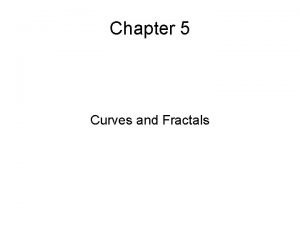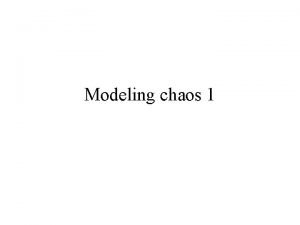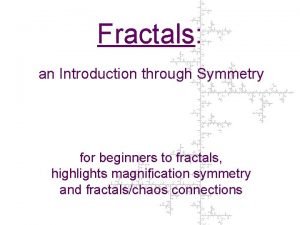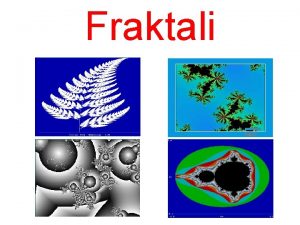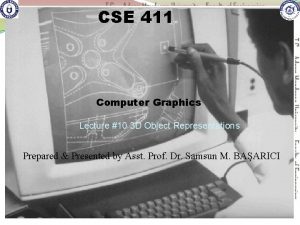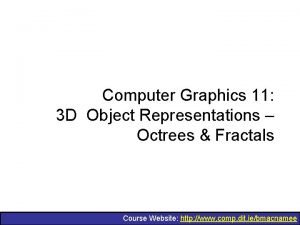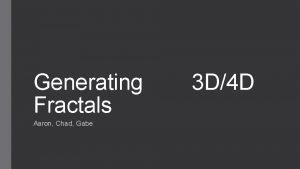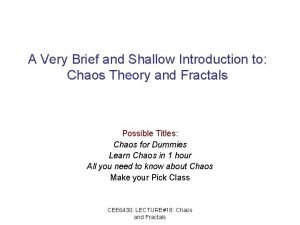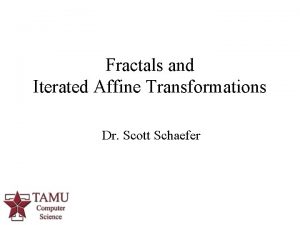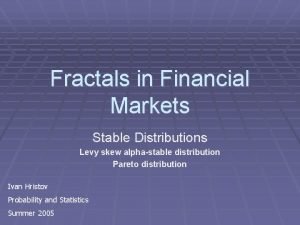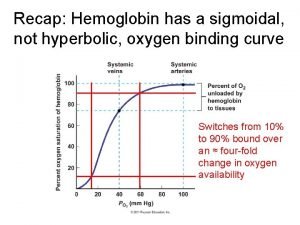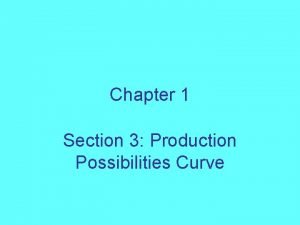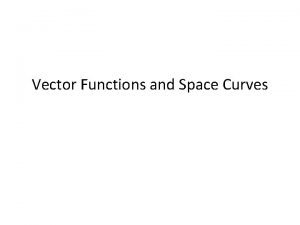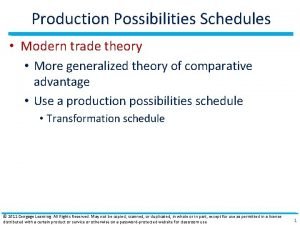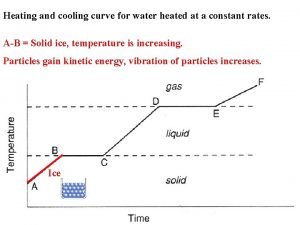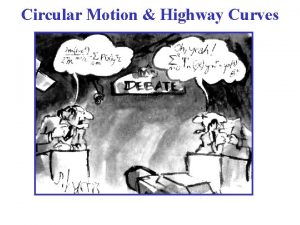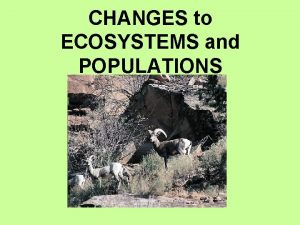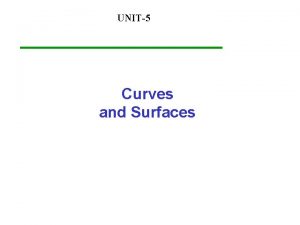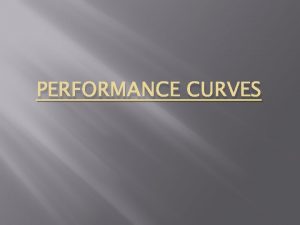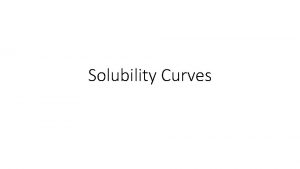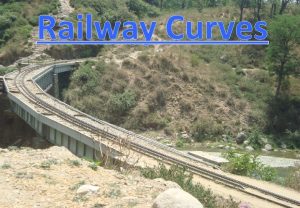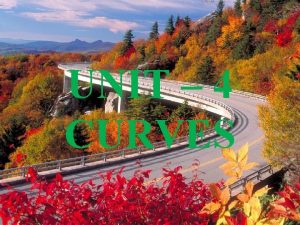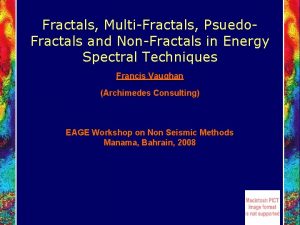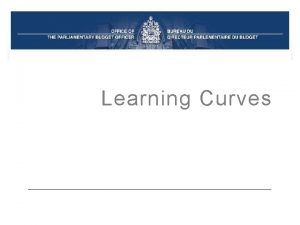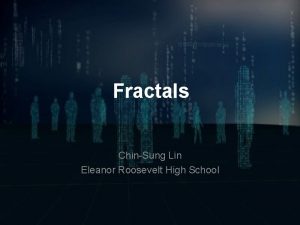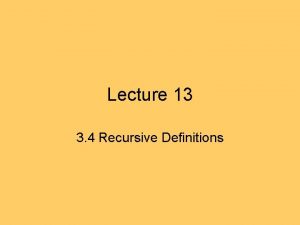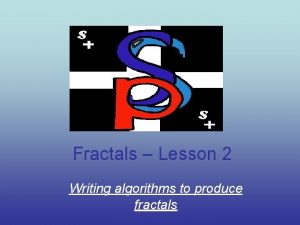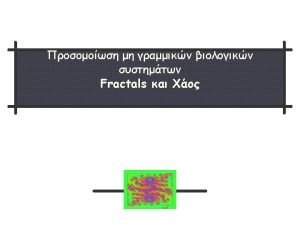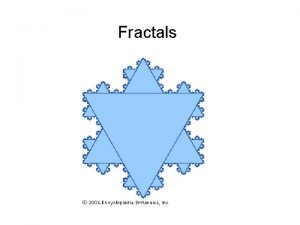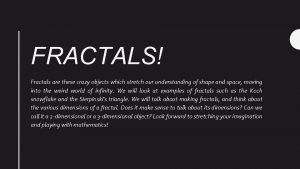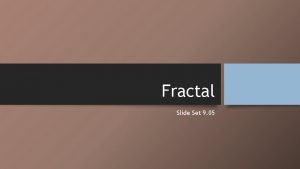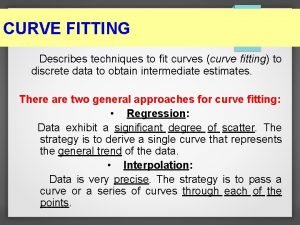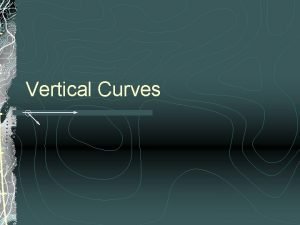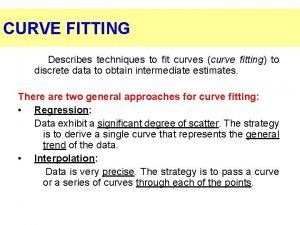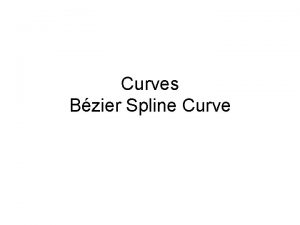Chapter 5 Curves and Fractals Curve Generation In
























- Slides: 24

Chapter 5 Curves and Fractals

Curve Generation • In computer graphics, we often need to draw different types of objects onto the screen. • Objects are not flat all the time and we need to draw curves many times to draw an object.

Curve • A curve is an infinitely large set of points. Each point has two neighbors except endpoints in specific direction.

Bezier curve • Bezier curve is discovered by the French engineer Pierre Bézier. These curves can be generated under the control of other points.

Bezier curve • The simplest Bézier curve is the straight line from the point P 0 to P 1. • A quadratic Bezier curve is determined by three control points. • A cubic Bezier curve is determined by four control points.

Properties of Bezier Curves • They always pass through the first and last control points. • The degree of the polynomial is one less that the number of defining polygon point. Therefore, for 4 control points, the degree of the polynomial is 3, i. e. cubic polynomial.

Properties of Bezier Curves • A Bezier curve generally follows the shape of the defining polygon. • The direction angle of the end points is same as that of the first and last segments • A given Bezier curve can be subdivided into two Bezier segments which join together to form a new shapes.

Fractals

Fractals • Fractals are very complex pictures generated by a computer from a single formula. • They are created using iterations. • This means one formula is repeated with slightly different values over and over again, taking into account the results from the previous iteration.

Fractals are used in many areas Astronomy: For analyzing galaxies , rings of Saturn Biology/Chemistry: For depicting bacteria cultures, Chemical reactions, Human anatomy, molecules, Plants etc

Koch Fractals (Snowflakes) 1/3 1/3 1/3 Generator Iteration 0 Iteration 1 Iteration 2 Iteration 3

Fractal Tree Generator Iteration 1 Iteration 2 Iteration 3 Iteration 4 Iteration 5

Fractal Fern Generator Iteration 0 Iteration 1 Iteration 2 Iteration 3

Fractals

Generation of Fractals can be generated by repeating the same shape over and over again as shown in the following figure. In figure (a) shows an equilateral triangle. Fig: (a)

Fractals In figure (b), we can see that the triangle is repeated to create a star-like shape. Fig: (b)

Fractals In figure (c), we can see that the star shape in figure (b) is repeated again and again to create a new shape. Fig: (c)

3 D Transformation In the 2 D system, we use only two coordinates X and Y but in 3 D, an extra coordinate Z is added. 3 D graphics techniques and their application are fundamental to the entertainment, games, and computer-aided design industries.

Translation In 3 D translation, we transfer the Z coordinate along with the X and Y coordinates. The process for translation in 3 D is similar to 2 D translation. A translation moves an object into a different position on the screen. Figure: 3 D Translation

Rotation 3 D rotation is not same as 2 D rotation. In 3 D rotation, we have to specify the angle of rotation along with the axis of rotation. We can perform 3 D rotation about X, Y, and Z axes. Figure: 3 D Rotation

Rotation The following figure explains the rotation about various axis: Rotation about x-axis Rotation about y-axis Rotation about z-axis

Scaling You can change the size of an object using scaling transformation. In the scaling process, you either expand or compress the dimensions of the object. Scaling can be achieved by multiplying the original coordinates of the object with the scaling factor to get the desired result. Figure: 3 D Scaling

Shear A transformation that slants the shape of an object is called the shear transformation. Like in 2 D shear, we can shear an object along the X-axis, Y-axis, or Zaxis in 3 D. Figure: 3 D Shearing

Thank u. .
 Fractals deals with curves that are
Fractals deals with curves that are Fractals and chaos
Fractals and chaos Fractals for beginners
Fractals for beginners Mojoworld generator
Mojoworld generator Self squaring fractals
Self squaring fractals Gpoint c++
Gpoint c++ Octrees in computer graphics
Octrees in computer graphics Quaternion fractals
Quaternion fractals Cauliflower chaos fractals every
Cauliflower chaos fractals every Fractals
Fractals Fractals in financial markets
Fractals in financial markets Second generation vs first generation antipsychotics
Second generation vs first generation antipsychotics You are good and your mercy is forever
You are good and your mercy is forever S curve and j curve
S curve and j curve J curve vs s curve
J curve vs s curve Hill equation for hemoglobin
Hill equation for hemoglobin The function of the compensating curve is
The function of the compensating curve is Chapter 1 section 3 production possibilities curves
Chapter 1 section 3 production possibilities curves Chapter 1 section 3 production possibilities curves
Chapter 1 section 3 production possibilities curves Space curves
Space curves Creating production possibilities schedules and curves
Creating production possibilities schedules and curves S and j curves
S and j curves Cooling curve labeled
Cooling curve labeled Highway curves banked and unbanked
Highway curves banked and unbanked S and j curves
S and j curves
